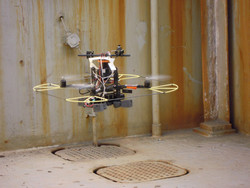Ship inspections supported by robotic tools
Ship inspections are the basic instrument for safeguarding the vessels’ sea-worthiness. Due to their periodic nature they remain part of the vessel’s operational lifecycle imposing unavoidable downtimes and conduction costs and still the inspection quality may be subject to the human interpretation of regulation and its correspondence to the real-life situation. The EU funded the MINOAS (Marine inspection robotic assistant system) project addressed ship inspections with the objectives to: abolish the need for access means since extensive staging or use of cranes is normally required as part of hull inspection to conduct close-up visual survey and hull thickness measuring, which leads to increased costs and downtimes from the market-side and endangers human personnel, satisfy uniform quality standards which may vary depending on the inspectors’ experience, fatigue or time available and provide a systematic inspection approach, given that established common practices in the industry expedite activities and reduce downtimes but also provide a high level of confidence for the implicated parts (stakeholders). MINOAS built on the current developments on mobile robotic systems to design, develop or adapt aerial platforms, magnetic crawlers and underwater vehicles that can undertake the full set of hull-inspection activities, i.e. grabbing close-range images and videos from the vessel surface and conduct hull-thickness measurements. Semi-autonomous characteristics have been partially implemented and the underlying infrastructure (communication network, deployment strategies), for their parallel operation, has been designed. A software suite comprising of image-defect detection tools has been realized as a parallel activity, to support the standardization and uniformity of defect identification results. Validation and demonstration has been carried out in cargo holds of dry-docked vessels as part of a two-phase testing. Results of the MINOAS-tools operation in real-life have been recorded and broadcasted through a dedicated documentary by Euronews, while intermediate technical results have been disseminated by organization of a workshop, participation in conferences and promotion through two attendances to the Posidonia international maritime Exhibition. The market exploitation potential has similarly been part of the MINOAS study.
Keywords
Robots, hull ship inspection, marine vessel, vessel inspections, marine inspection



